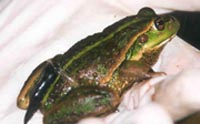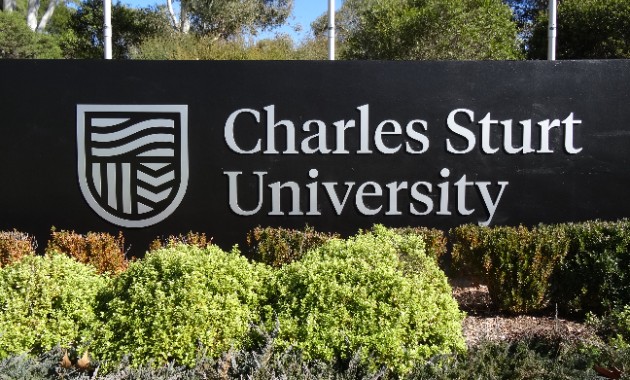She’s yet to see the elusive Southern Bell Frog, a threatened species in NSW, but for a Charles Sturt University (CSU) researcher the fact that she heard one call was “incredibly exciting”.
 It is the first time in more than 30 years that a Southern Bell Frog had been reported in the lower Lachlan catchment in the central west NSW.
It is the first time in more than 30 years that a Southern Bell Frog had been reported in the lower Lachlan catchment in the central west NSW.Ms Carmen Amos, a PhD student with CSU’s Institute for Land, Water and Society (ILWS), recorded the male frog’s call last November while looking for frogs in the lower and middle Lachlan catchments. She is researching how frogs are coping with a range of environmental factors, including floods, in the Lachlan catchment in central NSW.
Ms Amos, who began her surveys in September last year, is taking samples from 50 sites in the wetlands, creeks and river from the Great Cumbung Swamp, from 100 km north-west of Hay to Condobolin. While she has found plenty of the more common frog species across the catchment such as the Spotted Marsh Frog, the Barking Marsh Frog, the Peron’s tree Frog and the Eastern Sign Bearing Frog, it was the discovery of a Southern Bell Frog in the Lower Lachlan Swamp that was a real coup. [Hear a Southern Bell Frog at bottom of the page]
“Records show the Southern Bell Frog was found around Oxley below the Lower Lachlan Swamp in 1972, and in the Booligal Swamp, the system above the Lower Lachlan Swamp, in 1978. But because that whole area dried out during the drought, they were expected to have either retracted or disappeared altogether. Finding one is a really positive sign that they are still there,” Ms Amos said.
The find and Ms Amos’ research is part of a one-year project with the Institute’s Dr Skye Wassens and Professor Gary Luck titled ‘Assessment of post-flood recovery of frog populations in the Lachlan catchment’, partly funded by the NSW Office of Environment and Heritage. A report on the project, which follows the floods experienced in the catchment in March last year, is currently being written.





Social
Explore the world of social